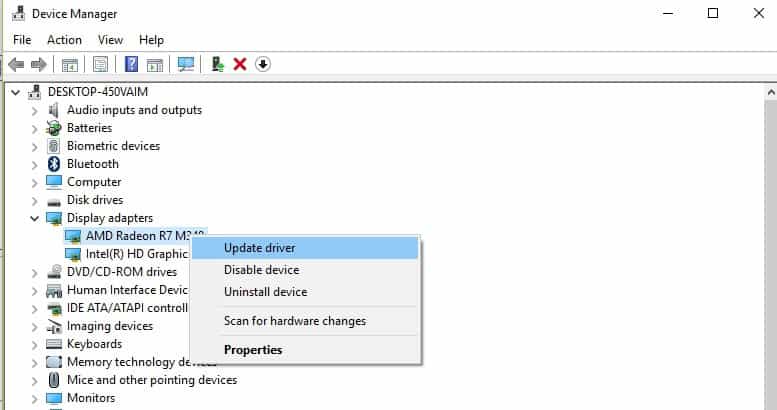Screen Dims And Brightens Randomly
You're smashing your keyboard to increase your screen brightness, yet it won't go any higher, but you know you've been able to set it higher before. Angered by this, you get up and move your laptop, only to suddenly notice that the display does in fact get a lot brighter.
I bought a new pc last week and i've noticed that from time to time my screen just dims itself randomly be it that i'm gaming or you surfing the net. I tried playing with monitor setting but that didnt work so i think its something with the gpu that i have. I also tried changing around the settings in nvidia panel but that didnt work. Jul 08, 2014 Hi. I have an asus laptop. I cannot disable the auto-brightness adjust. It dims/lightens at different brightnesses which ruins watching something on it. Really annoying. I have googled so much and discovered there is supposed to be a fn+a command to enable/disable this feature. It does nothing on my laptop. I reinstalled the ATK package several times.
Now you're confused and worried that your laptop is potentially haunted. If this scenario sounds familiar, then I have some good news for you. First of all, no, your laptop is not haunted, but more importantly, we're going to go into why this is happening and how to fix it.
Adaptive Brightness in Windows 10
In modern versions of Windows, Microsoft introduced a feature called adaptive brightness. Most displays, especially on laptops, utilize ambient light sensors to detect surrounding levels of light.


The adaptive brightness feature taps into the ambient light sensors to automatically adjust your display to match surrounding lighting conditions. Thus, adaptive brightness is useful in conserving battery life since the display is a pretty power-hungry component.
IntroductionApproximately 16 YouTube comment screenshots requesting Half Life 3 appear on screen with a sound effect accompanying each. The narrator then says the trailer is rated 'H' for honest, with a doctored rating box appearing and effects eventually appear on it, phasing it out, and the trailer begins.TrailerFrom our Lord and Savior. 
However, what if you're not concerned about battery life and want the brightness as high as possible? Furthermore, the ambient light sensor is not perfect, and at times your display brightness can be in flux as described above. Luckily, there's an easy fix.
Step 1: Open Power Options
Click on the Start button, then search for 'Power Options' and launch the corresponding Control panel section.
For computers with a light sensor, typically laptop computers, Windows 10 has the ability to automatically adjust the screen brightness depending on the ambient light levels.
This feature can be more annoying than helpful, either leaving your screen too dark or frequently adjusting the brightness levels.
Here’s three ways to disable the automatic screen brightness feature.
Lenovo Yoga Screen Dims Randomly
Method 1: using the systems setting
- Open the Windows start menu and click on ‘Settings’ (a cog icon)
- In the settings window, click on ‘System’
- The ‘Display’ menu should be selected on the left, if it is not – click on ‘Display’
- Turn the ‘Change brightness automatically when lighting changes’ to ‘Off’
- Click ‘Apply’ to save the changes.
Help – I don’t have the ‘Change brightness automatically when lighting changes‘ option
If you don’t have the ‘Change brightness automatically when lighting changes’ option it’s likely your computer does not have a light sensor and therefore does not have the automatic brightness feature.
If you’re sure your computer does have a light sensor – try checking the manufactures website for the correct driver and/or software package. It is possible that Windows 10 support is not provided.
In this case you will need to use the manual brightness adjustments. On laptops, these are usually done using buttons on or new the keyboard – sometimes in combination with a Fn (function) key. For desktop computers, the monitor will have buttons and a menu on the front or the side of the monitor.
Method two: change the power plan advanced options
- Open the Windows start menu and click on ‘Settings’
- In the settings window, click on ‘System’
- Click on ‘Power & sleep’ in the left hand menu, then click on the ‘Additional power settings’ link
- For the power plan you currently have enabled (balanced by default – the enabled plan will be bold), click on ‘Change plan settings’.
- Click on ‘Change advanced power settings’
- Expand ‘Display’ -> ‘Enable adaptive brightness’ and make sure the setting is set to ‘Off’
- Click ‘OK’ to save the changes.
Help – The ‘Adjust my screen brightness automatically’ ON – OFF is greyed out
This issue sounds like a driver support issue – that either the correct software for the video card is not installed, or the software provided by the manufacture does not properly support Windows 10 (which is likely if the computer is 2 or more years old).

How To Brighten Monitor Screen
In this case, you can try opening the computer Device Manager and changing the driver for the video card to the Microsoft basic driver.